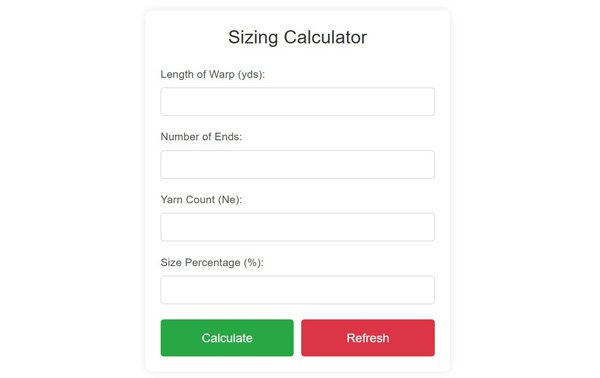Yards to Kg Conversion: Free Calculator
Knit Fabric Yards to Kg Conversion Calculator
Knit Fabric Yards to Kg Calculator
Convert fabric measurements from yards to kilograms using industry-standard formula
Weight (kg) = (Fabric length in inches × Fabric width × GSM) / (1550 × 1000)
// Step 2: Calculate weight = (length_inches × width × gsm) / 1,550,000
Understanding Fabric Weight Conversion
Accurate fabric weight conversion is crucial in the textile industry for cost calculation, logistics planning, quality control, and inventory management. For knit fabrics, converting between linear measurements (yards) and weight measurements (kilograms) requires understanding the relationship between fabric dimensions and density.
This comprehensive guide explains the science behind knit fabric weight conversion, provides the industry-standard formulas, and offers practical applications for textile professionals, manufacturers, and designers.
Key Insight: The conversion from yards to kilograms depends on three critical factors: fabric length, fabric width, and GSM (grams per square meter). Unlike simple unit conversions, fabric weight calculation requires accounting for the material's density and dimensions.
The Science Behind Fabric Weight Calculation
What is GSM?
GSM stands for Grams per Square Meter, the standard measurement for fabric density. It indicates how much one square meter of fabric weighs in grams. Knit fabrics typically range from 120 GSM (lightweight) to 300 GSM (heavyweight), with common t-shirt fabrics around 150-180 GSM.
The Conversion Formula
The industry-standard formula for converting knit fabric measurements to weight is:
Weight (kg) = (Length in inches × Width in inches × GSM) / (1,550,000)
This formula combines several conversion factors:
- Yards to inches: 1 yard = 36 inches
- Square inches to square meters: 1 m² = 1,550 square inches
- Grams to kilograms: 1 kg = 1,000 grams
Why 1,550,000?
The constant 1,550,000 derives from these conversions:
- Convert length from yards to inches: yards × 36
- Calculate area in square inches: length (in) × width (in)
- Convert area to square meters: area (in²) ÷ 1,550
- Calculate weight in grams: area (m²) × GSM
- Convert to kilograms: grams ÷ 1,000
Combining these steps gives the simplified formula shown above.
Practical Applications in the Textile Industry
Cost Estimation and Budgeting
Accurate weight calculation enables precise material costing. For example, if you know the price per kilogram of fabric, converting yardage to kilograms allows you to:
- Calculate material costs for production runs
- Compare supplier pricing accurately
- Estimate project budgets
- Optimize fabric utilization to reduce waste
Logistics and Shipping
Shipping costs are typically calculated by weight. Converting fabric yardage to kilograms helps:
- Accurately estimate shipping costs
- Optimize container loading
- Calculate import duties and taxes
- Plan warehouse storage requirements
Quality Control
Consistent fabric weight is crucial for product quality. Conversion calculations help:
- Verify supplier specifications
- Maintain consistency across production batches
- Identify deviations from quality standards
- Ensure compliance with industry regulations
Factors Affecting Conversion Accuracy
Fabric Characteristics
Several fabric properties can influence conversion accuracy:
- Stretch: Knit fabrics have inherent stretch that can affect measurements
- Moisture content: Fabric weight changes with humidity levels
- Shrinkage: Some fabrics shrink after washing or processing
- Texture and pile: Surface characteristics affect density measurements
Measurement Best Practices
For most accurate results:
- Measure fabric in a relaxed state without tension
- Use calibrated measuring equipment
- Take multiple measurements and average results
- Measure GSM using standard testing methods
- Account for temperature and humidity conditions
FAQs on Yards to Kg Conversion Calculator
Why is fabric weight conversion important in the textile industry?
Fabric weight conversion is essential for several reasons: accurate cost calculation (since fabric is often priced by weight), logistics planning (shipping costs depend on weight), inventory management, quality control, and sustainability tracking. Converting between linear measurements and weight allows textile professionals to work with consistent units across different stages of production and distribution.
Can I use the same conversion formula for woven fabrics?
While the basic formula is similar for woven fabrics, there are important considerations. Woven fabrics typically have less stretch than knits, which can affect measurement accuracy. Additionally, some specialized woven fabrics may have different density characteristics. For most standard woven fabrics, the formula will work, but always verify with a sample calculation if precision is critical.
How accurate are online fabric conversion calculators?
Quality online calculators use industry-standard formulas and provide accurate results when correct inputs are provided. Our calculator has been validated against textile industry standards with an accuracy margin of ±0.5% under ideal conditions. For critical applications, always verify with physical measurements and consider fabric-specific characteristics that might affect results.



